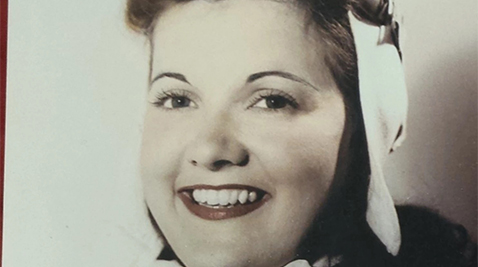ARLINGTON, Va. — As a last request, Elaine Harmon, a Women Airforce Service Pilot, wanted to be cremated and buried at Arlington National Cemetery.
“It really meant a lot to her,” Erin Miller, Harmon’s granddaughter and a Silver Spring native, said in an interview. “She was proud of her service and very patriotic. She was proud to be an American.”
But the cemetery, one of the nation’s most famous and in-demand resting places for the military, refused to fulfill Harmon’s wish in September. She was denied burial at Arlington.
That has prompted Sen. Barbara A. Mikulski (D-Md.) to introduce legislation to restore inurnment rights at Arlington National Cemetery for Women Airforce Service Pilots after the Army’s policy change.
Harmon was born in Baltimore but after the war settled in Silver Spring and lived there for 60 years until she passed away last April.
She joined the Women Airforce Service Pilots after talking with her husband, who went overseas for the war, according to a 2004 Library of Congress interview.
After reading an ad in the Diamondback, Maryland’s student-run campus newspaper, Harmon was one of three women to join a piloting program.
“It was a great program as far as I was concerned. It cost $40, we got 35 or 40 hours of flying time… that included a physical examination and insurance,” Harmon said in the 2004 interview with the Library of Congress.

During World War II, the Women Airforce Service Pilots were the first women in history trained to fly American military aircraft, at the time a controversial answer to the shortage of male pilots.
The Women Airforce Service Pilots ferried planes from U.S. factories to points of embarkation and logged over 600 million miles across the country.
“I’m deeply disappointed the Army continues to prevent the Women Airforce Service Pilots of World War II from being laid to rest among our nation’s patriots in Arlington National Cemetery,” Mikulski said in a statement. “If they were good enough to fly for our country, risk their lives and earn the Congressional Gold Medal, they should be good enough to be laid to rest at Arlington Cemetery. This legislation will right this wrong.”
Long forgotten after their service ended, the WASP corps was recognized by a fellow World War II pilot, then-Sen. Barry Goldwater, R-Ariz. He won approval of an amendment in a 1977 law, signed by President Jimmy Carter, that stated the women were considered on “shall be considered active duty for purposes of all laws administered by the Veterans Administration.”
The Arlington National Cemetery spokesman Stephen Smith responded in a statement that WASP service was “highly commendable” and “certainly worthy of recognition,” but “it does not, in itself, reach the level of Active Duty service required for inurnment at Arlington National Cemetery.”
Before 2010, he said, the cemetery “erred when they granted eligibility for some Women Airforce Service Pilots” because it misinterpreted the law.
The cemetery blamed the apparent confusion on a law which authorized the secretary of defense to declare that certain groups be considered active duty for the purpose of Veterans Affairs benefits, which include burial and inurnment at national cemeteries maintained by the Department of Veterans Affairs.
Arlington National Cemetery, however, is not administered by the Department of Veteran Affairs and due to space limitations is more restrictive about those who qualify for burials there, Smith said.
“Based on current demand and capacity, Arlington will exhaust internment and inurnment space for any active duty service member or veteran in the next 20 years, by the mid-2030s,” he said.
Under Mikulski’s bill, the 2015 policy change would be overturned and allow Women Airforce Service Pilots to be inurned at Arlington National Cemetery.
“She had no idea when she passed away that this would become a problem,” Miller said. “She was under the impression that all the work she did meant that she was a veteran and there would not be a problem.”
Miller described her grandmother as sort of a celebrity figure. Miller has made it her mission to secure inurnment rights for service pilots.
She said her grandmother used to take pictures, sign autographs and receive fan mail.

“When I was really little, I thought all grandmothers were famous World War II pilots,” Miller said.
It was also common for Harmon to dress up as “Uncle Sam” during Independence Day and be invited to the White House and museums.
According to Mikulski’s statement, 38 Women Airforce Service Pilots died in the line of duty and their families were “saddled with the costs to transport their bodies and arrange burials.”
Miller is continuing what has been a yearlong fight since her grandmother passed away in April.
Last Thursday, Miller said she went to Congress and met with “three or four” representatives in person to spread information about her late grandmother’s story.
“We already have a really big following in Congress,” Miller said.
Miller is also using social media to spread awareness and said she’s been met with generally positive feedback. Teachers have even told her that they wanted to add a curriculum on Women Airforce Service Pilots.


You must be logged in to post a comment.